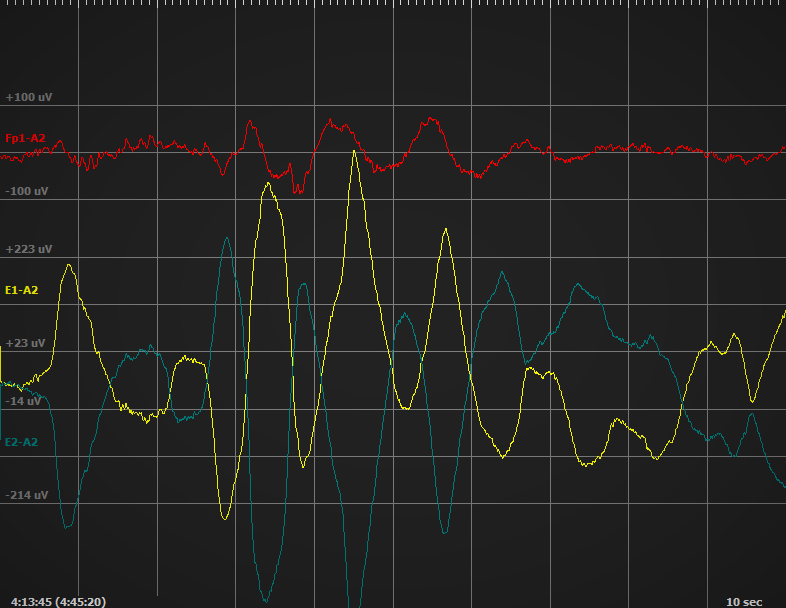Back in the 1980's, Stephen Laberge pioneered an experiment in which he used a specific set of eye-movements to indicate that he was dreaming lucidly. The result of that experiment was the proof that was needed to show that Lucid Dreaming was, indeed, real.
Since then, this technique of using eye-movements as a signal have been used in various studies. For instance, it has been used to study dream muscular movements (Erlacher et al. 2003), analyze EEG activity of Lucid Dreaming (Voss et al. 2009), as well as Brain imaging studies (Dresler et al. 2011).
Here, I replicate the above experiments using the OpenLD platform. The results of my eye-movements are shown below:
As of right now, it is too early to mark that as a successful attempt, but it is nonetheless a motivating result. I will continue to experiment with the OpenLD platform and post more results in the future. Thanks!
Sources:
Windt, Jennifer M., "Dreams and Dreaming", The Stanford Encyclopedia of Philosophy (Spring 2016 Edition), Edward N. Zalta (ed.),

Discussions
Become a Hackaday.io Member
Create an account to leave a comment. Already have an account? Log In.